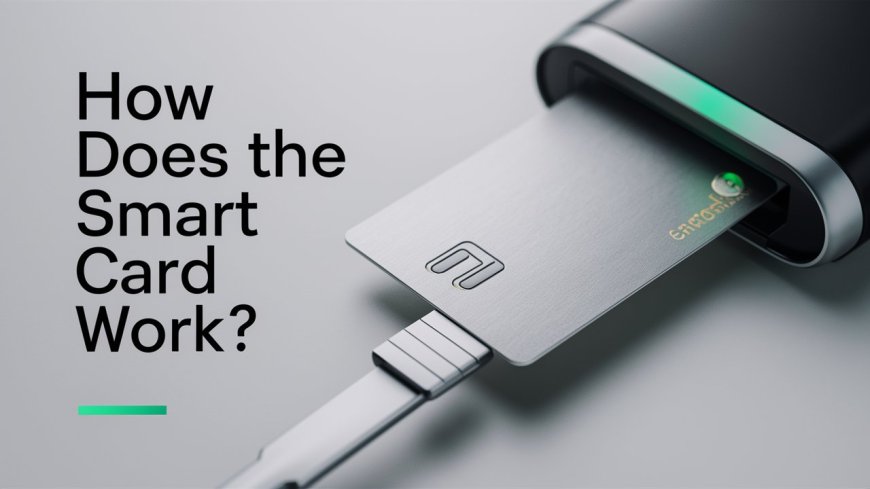How Does the Smart Card Work?
Learn the technology behind smart cards, their uses, and benefits. Discover how they secure transactions and store data efficiently.

In an era where convenience and security go hand in hand, smart cards have quietly revolutionized how we interact with the world around us. From effortlessly entering your office building to making lightning-fast payments, these unassuming pieces of plastic pack a powerful technological punch. But have you ever wondered what makes these cards so "smart"?
The concept of smart cards dates back to the 1970s when German inventors Jürgen Dethloff and Helmut Grötrupp first patented the idea of a plastic card with an embedded microprocessor. However, it wasn't until the 1990s that smart cards began to gain widespread adoption.
The first generation of smart cards relied on contact-based technology, requiring physical insertion into a reader. While revolutionary at the time, these cards had limitations in terms of convenience and durability. Enter proximity smart cards – the game-changers that ushered in a new era of contactless technology!
Proximity Smart Cards: The Contactless Revolution
A proximity smart card, as the name suggests, works its magic without physical contact. They communicate with card readers using radio frequency identification (RFID) technology. Here's a breakdown of how they function:
-
The card contains an antenna and a tiny chip.
-
The card reader emits a low-power electromagnetic field.
-
When the card comes within range (usually a few inches), it draws power from this field.
-
The chip activates and transmits its stored data to the reader.
-
The reader decodes the information and grants (or denies) access accordingly.
|
Type |
Range |
Power Source |
Common Uses |
|
Passive |
4-10 cm |
Reader's electromagnetic field |
Building access, public transit |
|
Semi-passive |
Up to 1 m |
Battery-assisted |
Toll collection, secure areas |
|
Active |
Up to 100 m |
Internal battery |
Asset tracking, long-range applications |
The Brains of the Operation: HID Access Control Card
When it comes to proximity smart cards, HID Global is a name that dominates the industry. The HID access control cards are widely used in corporate and institutional settings. HID cards come in various formats, but they all share the same core technology:
-
Encrypted data storage
-
Unique identification numbers
-
Compatibility with a wide range of readers
One particularly versatile option is HID printable proximity cards. These allow organizations to customize the card's appearance with logos, photos, and other identifying information while retaining all the smart functionality.
Read More Articles: The Five Best Wineries in Barossa Valley
The Technology Behind Proximity Smart Cards
At the heart of every proximity smart card lies a fascinating interplay of components:
-
Integrated Circuit (IC) Chip: This is the "brain" of the card, storing and processing data.
-
Antenna: Usually a copper or aluminum wire coil, facilitates communication with the reader.
-
Substrate: The plastic body of the card, typically made from durable PVC.
When a card comes within range of a compatible reader, the following process occurs:
-
The reader's electromagnetic field induces a current in the card's antenna.
-
This current powers up the IC chip.
-
The chip sends its stored data back through the antenna.
-
The reader captures and decodes this information.
This entire process happens in milliseconds, giving the impression of instant recognition.
PVC Proximity Cards: Durable and Versatile
Most HID proximity cards are made from polyvinyl chloride (PVC). This material offers several advantages:
-
Durability: Resistant to bending and everyday wear and tear
-
Printability: Easily customized with high-quality graphics
-
Cost-effective: Relatively inexpensive to produce in large quantities
The versatility of PVC makes it an ideal choice for proximity card vendors looking to offer customizable solutions to their clients.
Security Features: Keeping Data Safe
In an age of increasing digital threats, security is paramount. PVC proximity cards use various measures to protect the data they carry:
-
Encryption: Data stored on the chip is encrypted, making it difficult for unauthorized parties to access.
-
Unique Identifiers: Each card has a unique serial number, preventing duplication.
-
Mutual Authentication: Both the card and reader verify each other's authenticity before data transfer.
Proximity card vendors offering advanced cards may also incorporate additional security features like:
-
Biometric data storage
-
Dynamic security codes that change with each use
-
Anti-cloning technology
Applications Across Industries
The versatility of the proximity smart card has led to their adoption across a wide range of sectors:
-
Corporate: Employee identification and access control
-
Healthcare: Patient identification and record access
-
Education: Student IDs, library access, and meal plans
-
Hospitality: Hotel room keys and resort access
-
Public Transportation: Contactless fare payment systems
-
Government: Secure access to facilities and information systems
Each of these applications leverages the unique capabilities of proximity smart cards to enhance security, streamline operations, and improve user experience.
Read More Articles: Understanding the Costs of Water Heater Repair: What to Expect
The Future of Smart Cards
As technology evolves, so do smart cards. We're seeing exciting developments like:
-
Biometric integration: Combining fingerprint or facial recognition with card technology
-
Multi-application cards: One card for building access, payments, and more
-
Enhanced security: Advanced encryption to combat increasingly sophisticated threats
-
NFC integration: Allowing smart cards to interact with smartphones and other devices
-
Sustainable materials: Eco-friendly alternatives to traditional PVC
A report by ABI Research forecasts that 2.3 billion smart cards will be shipped annually by 2026, with a growing emphasis on contactless technology [1].
The Bottom Line
All in all, proximity smart card represents a fascinating intersection of convenience, security, and technological innovation. From HID access control cards to versatile PVC proximity cards, these devices have become an integral part of our daily lives. As we look to the future, the potential applications for this technology seem boundless, promising even greater integration between our physical and digital worlds.
Ready to explore how smart card technology can benefit your organization? Bristol ID Technologies offers modern solutions tailored to your specific needs. Contact our representatives today to discover how we can help you unlock the full potential of smart card technology for your business. Let's shape the future of secure access and identification together!
What's Your Reaction?





















